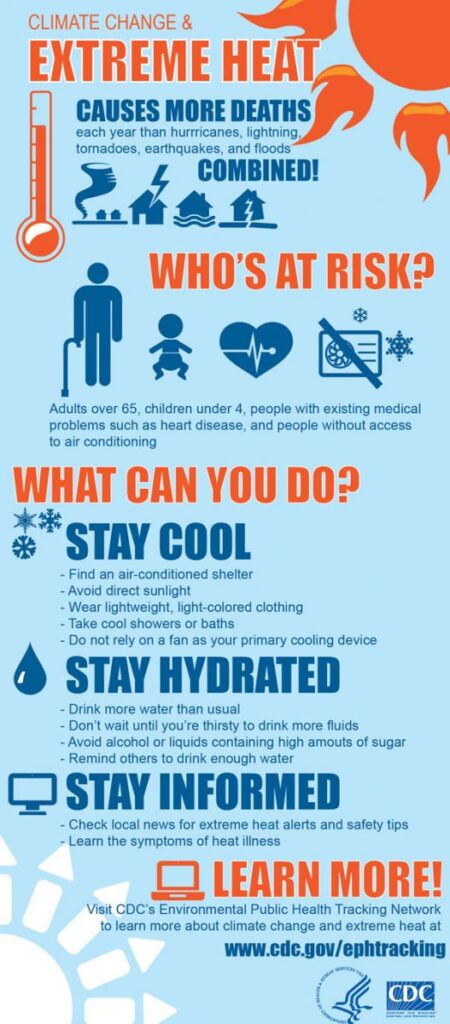As we head into the dog days of summer and extreme temperatures are becoming increasingly common, it’s important to be proactive in protecting ourselves, our families and our employees from the risks of heat-related illnesses.
In the United States, an average of 702 heat-related deaths occur each year and about 67,512 emergency room visits are due to the heat.
When our bodies struggle to cool down through sweating alone heat-related illnesses like heat stroke and heat exhaustion can develop and fast action is required to avoid a critical situation.
So keep an eye out for the warning signs and don’t ignore them.
What to Look For
HEAT STROKE
A heat stroke happens when the body can’t regulate the internal temperature because of the environment the person is in.
Warning signs
- High body temperature
- Hot, red, dry or damp skin
- Headache
- Dizziness
- Nausea
- Confusion
- Loss of consciousness
What to do
- Call 911 right away. Heat stroke is a medical emergency.
- Move the person to a cooler place.
- Help lower the person’s temperature with cool cloths or a cool bath.
- Do not give the person anything to drink.
HEAT EXHAUSTION
Heat exhaustion is a condition caused by your body overheating, usually as a result of prolonged exposure to or physical exertion in high temperatures.
Warning signs
- Heavy Sweating
- Cold, Pale and clammy skin
- Fast or Weak Pulse
- Nausea
- Muscle Cramps
- Tiredness
- Dizziness
- Headache
What to do
- Move to a cool place.
- Loosen your clothes.
- Put Cool wet cloths on your body or take a cool bath.
- Sip Water

Prevention
As in any safety situation, prevention is the best policy. If you are working or playing outside this summer, make sure you are prepared.
- Wear lightweight, loose-fitting clothing in light colors to allow better airflow.
- Protect your head with a hat or umbrella.
- Take frequent breaks and find respite in a cool or shaded area.
- Plan your tasks during the early morning hours when temperatures are generally lower.
- If you experience symptoms such as lightheadedness, weakness, confusion, or difficulty breathing due to exertion in the heat, immediately cease activity. Seek a cool environment or shade and rest.
- Stay properly hydrated by drinking plenty of water.

